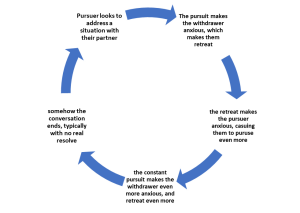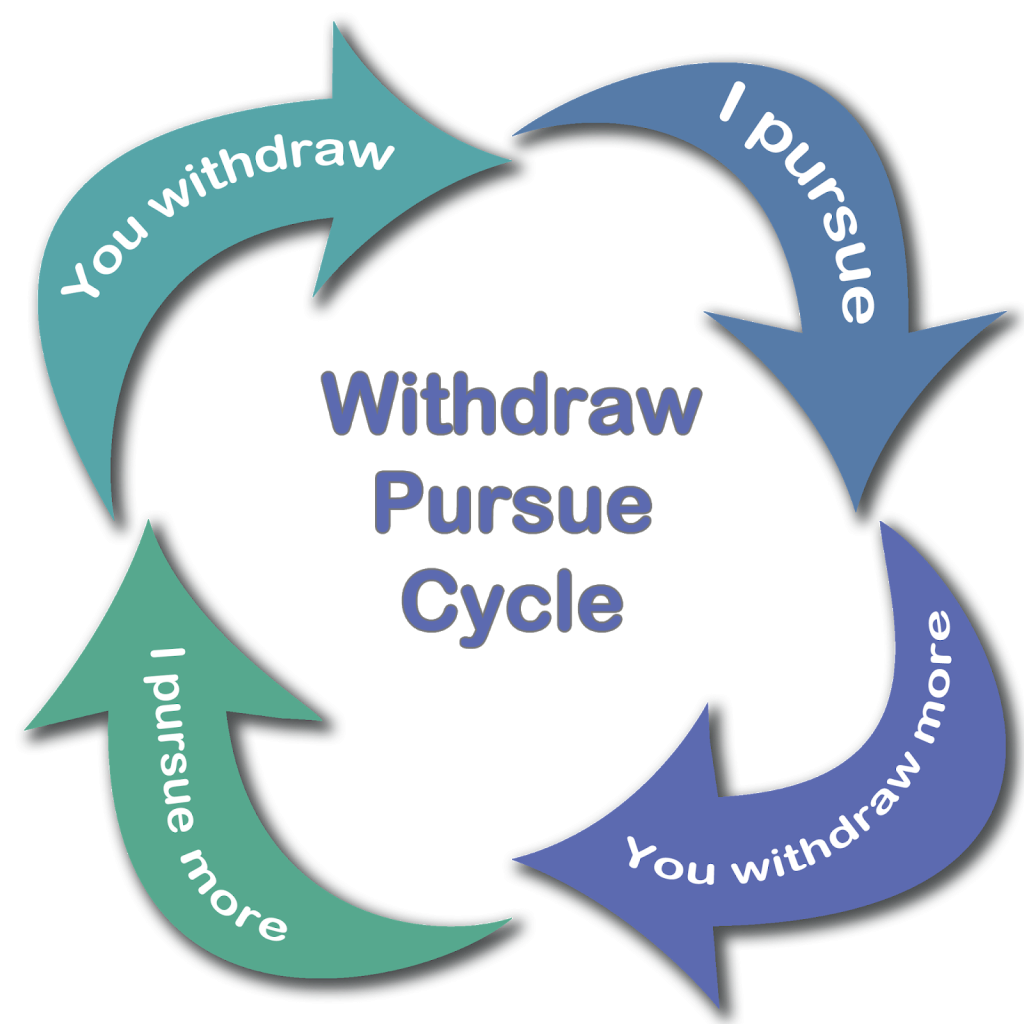The pursuer-withdrawer cycle stems from emotionally focused therapy, focusing mainly on partner-patterned interactions. The pursuer-withdrawer cycle focuses on a set of opposite yet complementary interactions/responses that will trigger other problematic interactions/responses (Carlson et al., 2017).
The pursuer within the relationship is usually the one who is pushing for intimacy, connection, conversation, etc. Frequently, they are those who are willing and ready to hash out a conflict as soon as it occurs. Those who have no issues with being able to vocalize themselves in the moment, even if the moment is a bit tense.
The withdrawer within the relationship tends to take an opposite stance. They are the ones who are more quick to retreat from confrontation, whether that is an internal retreat or a physical retreat. They may not be as good at understanding and communicating their emotions in the moment, especially if the conversation is tense.
These behaviors often find themselves working in tandem with one another when couples are communicating. The pursuer will tend to want to handle the conflict right then and there, but this direct desire to address the issue will make the withdrawer want to retreat or pull away, and when the withdrawn wants to pull away, this makes the pursuer wish to pursue them more.
The pattern goes as such:

This cycle will repeat itself until the conversation ends, and often, it ends with a blow-up. As noted above, these are the opposite yet complementary problematic behaviors that trigger other problematic behaviors.
Based on your Mapped Cycle, can you determine who engages more as the pursuer and who engages more as the withdrawer in your relationship?


